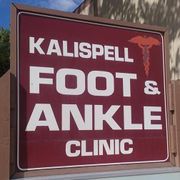
Foot pain can be a constant nuisance that drastically impacts your mobility. Bunions are a common cause, and a condition foot doctors regularly treat. Understanding this podiatric issue will ensure you seek treatment before it advances and help you avoid future growth. Take a look at how bunions form and what you can do about them.
A Guide to Bunions
What is a bunion?
Bunions are bumps that appear on the big toe’s base because the big toe has been pushed out of alignment. They are most common in older adults; however, newborns and adolescents may develop them too.
How do they form?

It’s thought that pressure from walking and the shape of your foot cause bunions. The constant pressure, especially in tight-fitting shoes and heels, gradually bends your big toe into the adjacent one. A red, swollen, painful bump then forms.
People with flat feet or a family history of bunions are more prone. Foot injuries and rheumatoid arthritis may also increase your likelihood.
How are they treated?
Your foot doctor will focus on treating symptoms because bunions don’t go away. They may recommend wearing pads over the bunion to alleviate pressure, wearing looser, more comfortable shoes, or creating custom orthotics to improve shoe fit.
Foot doctors often recommend over-the-counter pain relievers to reduce discomfort and swelling, and they can provide steroid injections if the pain is overwhelming. In cases where the bunion impacts mobility, they may perform surgery to reposition the toe bones.
How can I avoid them?
Always wear comfortable shoes—they shouldn't be too narrow at the tip, which can put pressure on the big toe joint. Try to avoid wearing heels and other shoes that push your toes out of their natural position. It’s also best to speak with a foot doctor about custom orthotics so you have proper foot support.
For over 25 years, residents of Flathead County, MT, have turned to Kalispell Foot & Ankle Clinic for their foot care needs. Podiatrist Stephen Latter treats a wide range of conditions, including heel and arch pain, sprained ankles, and ingrown toenails. Call (406) 755-5250 to schedule an exam, and visit their website to learn more about the practice.
About the Business
Have a question? Ask the experts!
Send your question

